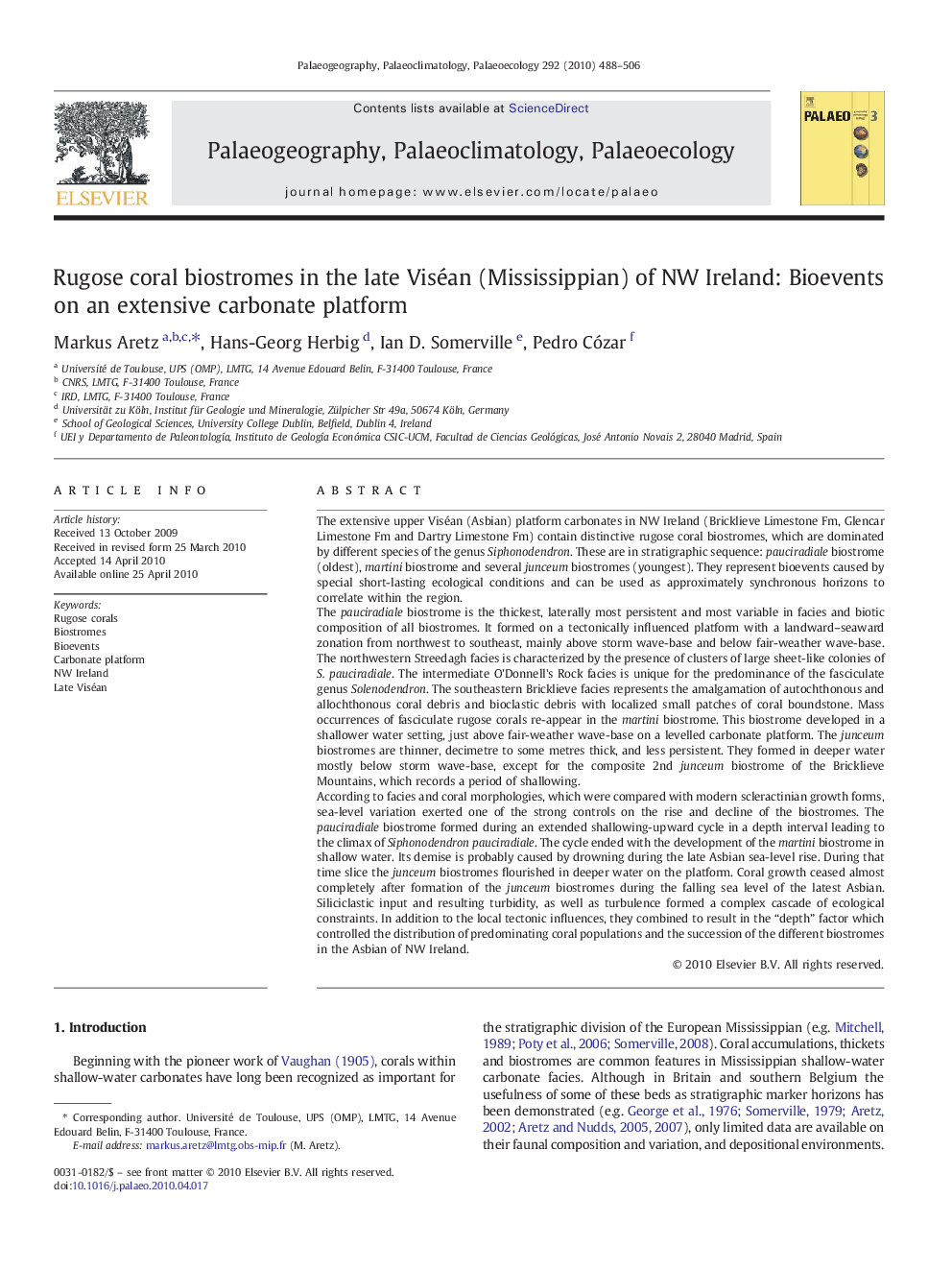| کد مقاله | کد نشریه | سال انتشار | مقاله انگلیسی | نسخه تمام متن |
|---|---|---|---|---|
| 4467711 | 1622277 | 2010 | 19 صفحه PDF | دانلود رایگان |

The extensive upper Viséan (Asbian) platform carbonates in NW Ireland (Bricklieve Limestone Fm, Glencar Limestone Fm and Dartry Limestone Fm) contain distinctive rugose coral biostromes, which are dominated by different species of the genus Siphonodendron. These are in stratigraphic sequence: pauciradiale biostrome (oldest), martini biostrome and several junceum biostromes (youngest). They represent bioevents caused by special short-lasting ecological conditions and can be used as approximately synchronous horizons to correlate within the region.The pauciradiale biostrome is the thickest, laterally most persistent and most variable in facies and biotic composition of all biostromes. It formed on a tectonically influenced platform with a landward–seaward zonation from northwest to southeast, mainly above storm wave-base and below fair-weather wave-base. The northwestern Streedagh facies is characterized by the presence of clusters of large sheet-like colonies of S. pauciradiale. The intermediate O'Donnell's Rock facies is unique for the predominance of the fasciculate genus Solenodendron. The southeastern Bricklieve facies represents the amalgamation of autochthonous and allochthonous coral debris and bioclastic debris with localized small patches of coral boundstone. Mass occurrences of fasciculate rugose corals re-appear in the martini biostrome. This biostrome developed in a shallower water setting, just above fair-weather wave-base on a levelled carbonate platform. The junceum biostromes are thinner, decimetre to some metres thick, and less persistent. They formed in deeper water mostly below storm wave-base, except for the composite 2nd junceum biostrome of the Bricklieve Mountains, which records a period of shallowing.According to facies and coral morphologies, which were compared with modern scleractinian growth forms, sea-level variation exerted one of the strong controls on the rise and decline of the biostromes. The pauciradiale biostrome formed during an extended shallowing-upward cycle in a depth interval leading to the climax of Siphonodendron pauciradiale. The cycle ended with the development of the martini biostrome in shallow water. Its demise is probably caused by drowning during the late Asbian sea-level rise. During that time slice the junceum biostromes flourished in deeper water on the platform. Coral growth ceased almost completely after formation of the junceum biostromes during the falling sea level of the latest Asbian. Siliciclastic input and resulting turbidity, as well as turbulence formed a complex cascade of ecological constraints. In addition to the local tectonic influences, they combined to result in the “depth” factor which controlled the distribution of predominating coral populations and the succession of the different biostromes in the Asbian of NW Ireland.
Journal: Palaeogeography, Palaeoclimatology, Palaeoecology - Volume 292, Issues 3–4, 15 June 2010, Pages 488–506